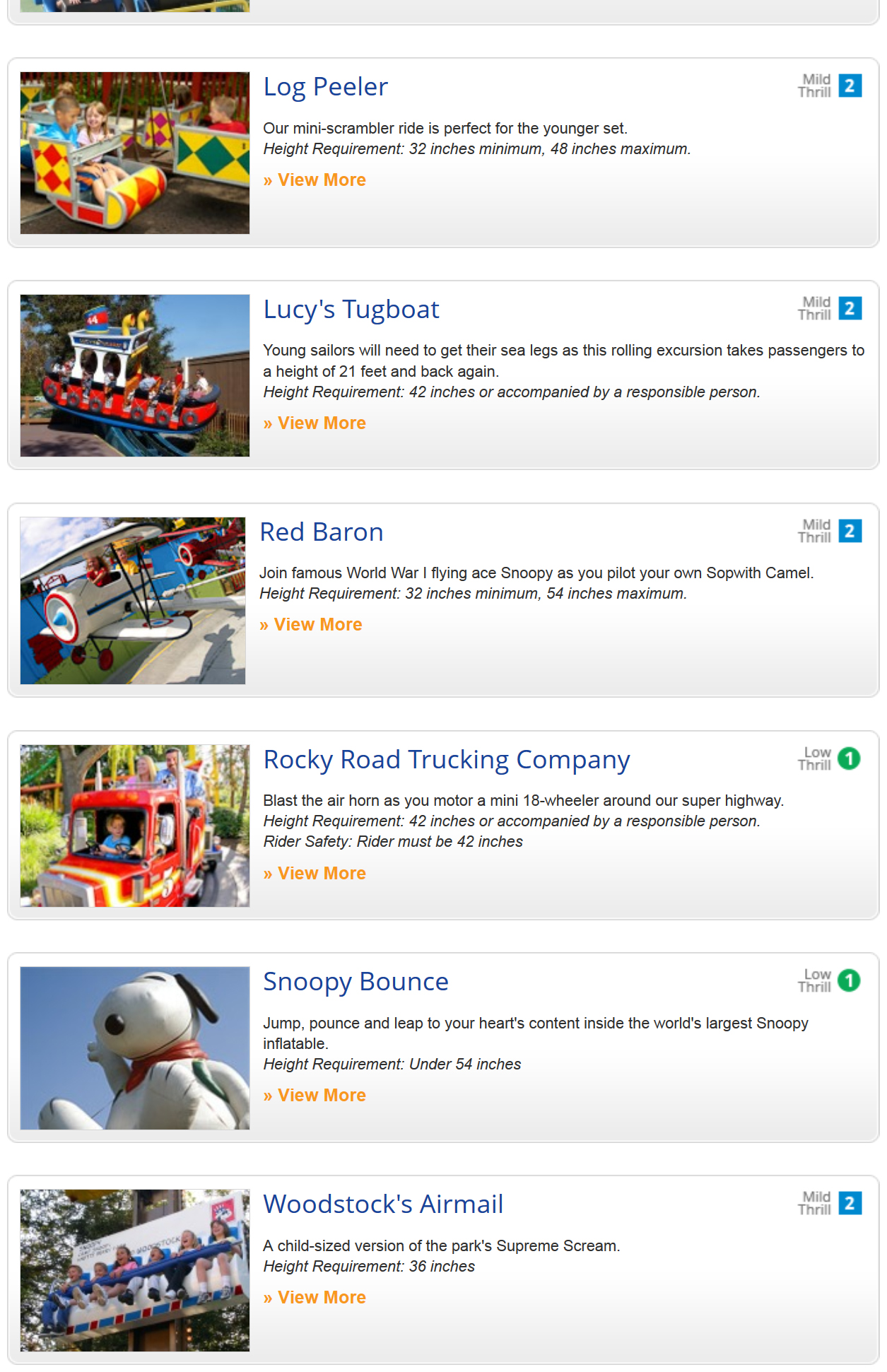- What rides are you the right height to go on by yourself?
- What information do we need to know to answer this question?
- How can we determine our height?
- How can we measure our height in inches?

Students may not know their height and may need to measure themselves. Additionally if they know their height in feet and inches, they may have trouble converting their answer to only inches. Once students know their height in inches, ask them to answer “The Challenge” question of “What rides are you the right height to go on by yourself?” Note that I ask “by yourself” to address the “accompanied by a responsible person” issue. Here are some thoughts to keep in mind during this activity:
- Many of the rides begin with “## inches” as opposed to “Over ## inches” or “At least ## inches”. We understand that they are implying it, but Knott’s Berry Farm is not “communicat[ing] precisely to others” (Math Practice 6). Technically it is saying that you have to be exactly “## inches” tall.
- Huff and Puff is the first ride to clearly articulate whether you have to be less than 52 inches tall, exactly 52 inches tall, or over 52 inches tall.
- Three rides have a range of heights that are clearly expressed using minimum and maximum heights.
- The issue from the first bullet point is best illustrated by the last ride, “Woodstock’s Airmail”. It states “Height Requirement: 36 inches”. I can guess that it means at least 36 inches tall but it is certainly not mathematically precise, and a student could make the case that it means exactly 36 inches. This is a great opportunity for students to “critique the reasoning of others” (Math Practice 3) and explain what could be improved.
Once students have determined which rides they are the right height to go on by themselves, the next step is to build upon this context and have them express their understanding using multiple representation. I suggest:
- Graphing the inequality on a number line
- Writing the inequality using symbols
- Explanation using words
- Numerical examples that show heights that are or are not the right height
Having students explain the connections between the multiple representations will deepen their understandings of what inequalities are.
Kristen Acosta made a Google Slides version with an interactive number line, which works great for remote learning.
- Rides – Top Half for Printing

- Rides – Bottom Half for Printing

- CCSS 2.MD.1 Measure the length of an object by selecting and using appropriate tools such as rulers, yardsticks, meter sticks, and measuring tapes.
- CCSS 6.NS.7a Interpret statements of inequality as statements about the relative position of two numbers on a number line diagram. For example, interpret –3 > –7 as a statement that –3 is located to the right of –7 on a number line oriented from left to right.
- CCSS 6.NS.7b Write, interpret, and explain statements of order for rational numbers in real-world contexts. For example, write –3° C > –7° C to express the fact that –3° C is warmer than –7° C.



2 Comments